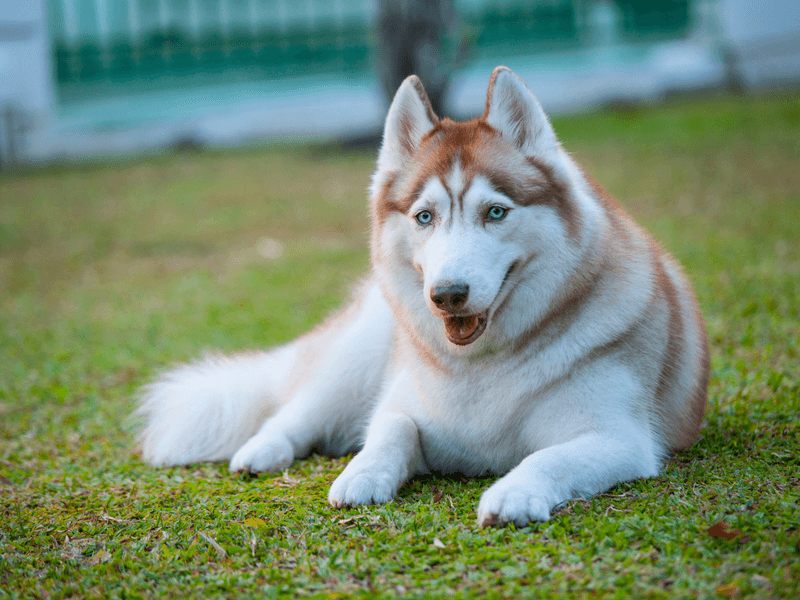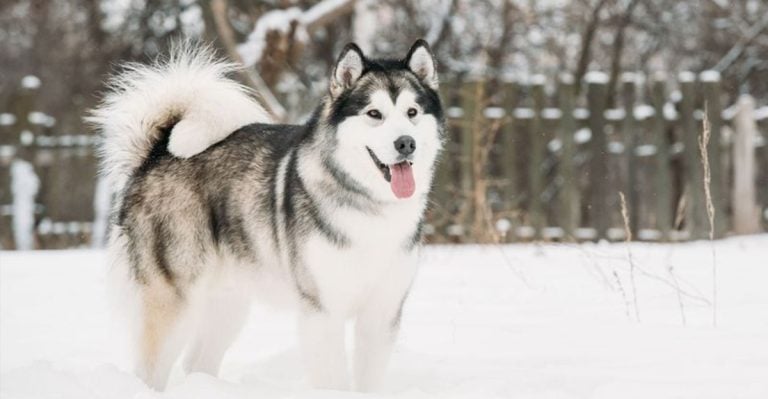These 13 Side-by-Side Traits Set Wolves Apart from Huskies
Wolves and huskies often confuse even animal enthusiasts with their striking similarities. Both share that wild, majestic appearance that captures our imagination. But beneath the surface, these canines have fundamental differences shaped by thousands of years of separate evolution.
Understanding what sets wild wolves apart from their domesticated husky cousins reveals fascinating insights about canine development and behavior.
1. Genetics and Ancestry
While huskies descended from wolves roughly 15,000 years ago, their genetic makeup has significantly diverged. Modern wolves maintain pure wild genetics, whereas huskies carry specific mutations related to starch digestion and human socialization.
Scientists can identify over 36 genetic markers that differentiate wolves from domesticated dogs like huskies. These genetic differences affect everything from metabolism to brain chemistry.
A husky’s DNA reveals its adaptation to human companionship, while wolf genetics remain optimized for wilderness survival without human intervention. This genetic divergence happened remarkably quickly in evolutionary terms.
2. Skull and Head Shape
Wolves possess larger, broader skulls with more pronounced cranial ridges than their husky relatives. This robust structure supports powerful jaw muscles necessary for crushing bones and taking down large prey in the wild.
A wolf’s head typically measures 9-11 inches long, while a husky’s head ranges from 7-9 inches. The wolf’s forehead slopes more dramatically into the muzzle, creating a distinctive profile that hunters and naturalists use for identification.
Husky skulls evolved for different purposes – their more compact, rounded head shape reflects generations of breeding for pulling sleds rather than hunting large mammals.
3. Ears
Wolf ears stand shorter, thicker, and more rounded than a husky’s taller, triangular ears. The wolf’s ear design prioritizes protection in fights with prey and other wolves, with smaller targets that are harder to bite.
Husky ears evolved for human communication – their more expressive, mobile ears help convey emotions to their human companions. Their upright position also helps funnel sounds when working in teams during sledding.
The interior ear canal differs too. Wolves have more specialized sound-capturing structures that can detect prey movements from remarkable distances – up to a mile away under ideal conditions – a critical survival advantage in the wild.
4. Paw Size
A wolf’s paws measure nearly twice the size of a comparable husky’s – averaging 4-5 inches wide versus a husky’s 2-3 inches. These oversized paws function like natural snowshoes, distributing weight when traversing deep snow or unstable terrain.
Between their toes, wolves grow dense fur that provides insulation and creates additional surface area for crossing snow. Husky paws, while still adapted for cold environments, lack this extreme specialization.
Wolf paw pads contain specialized circulation systems that prevent freezing in subzero temperatures. Blood vessels arrange in counter-current heat exchangers that maintain just enough warmth to prevent tissue damage without wasting precious body heat.
5. Coat and Fur Texture

Wolf fur contains a dense, woolly undercoat paired with longer, coarser guard hairs that repel moisture and provide camouflage. This double-layer system creates superior insulation against temperatures as low as -40°F.
Husky coats, while also double-layered, typically feel softer to the touch. Their fur evolved under human selection for specific working conditions rather than pure survival, resulting in less water resistance but easier grooming and maintenance.
Color patterns differ dramatically too. Wolves display muted earth tones that blend with their environment – grays, browns, and tans. Huskies exhibit more dramatic markings like facial masks and symmetrical patterns, traits humans selectively bred for aesthetic appeal.
6. Sense of Smell
Wolves possess approximately 280 million scent receptors compared to a husky’s 220 million, creating a dramatically enhanced ability to detect prey. This 27% advantage allows wolves to track scents over 100 miles under ideal conditions.
The olfactory processing center in a wolf’s brain occupies proportionally more space than in huskies. This specialized neural equipment enables wolves to distinguish between thousands of different scent signatures, identifying specific animals, their health status, and even emotional states.
Tracking behavior differs significantly too. Wolves systematically cast back and forth across scent trails, while huskies typically follow direct paths. This reflects the wolf’s need to locate mobile prey versus the husky’s breeding for following known routes.
7. Jaw Strength and Teeth
A wolf’s bite force measures approximately 1,200 pounds per square inch – nearly twice that of a husky at 650 PSI. This crushing power enables wolves to break large bones and quickly disable prey animals much larger than themselves.
Tooth structure reveals equally dramatic differences. Wolf canine teeth typically measure 2-2.5 inches long, while husky canines reach only 1-1.5 inches. The wolf’s longer, sharper teeth penetrate thick hides and reach vital organs with deadly efficiency.
Molars show adaptation differences too. Wolf molars feature sharper, more pronounced shearing surfaces for processing raw meat and crushing bones, while husky molars evolved slightly flatter surfaces better suited for their more varied diet under human care.
8. Vocalization
Wolves communicate through a sophisticated language of howls that can carry messages over 6-10 miles. Each pack develops unique howling patterns that function like audio signatures, helping members identify their family group and coordinate complex hunting strategies.
Huskies, famous for their “talking,” produce a wider range of sounds including howls, barks, and distinctive vocalizations that almost mimic human speech. Their barking ability, nearly absent in wolves, developed through domestication to facilitate human-dog communication.
Frequency analysis shows wolves produce deeper, longer sustained howls centered around 400 Hz. Husky vocalizations typically register at higher pitches around 800 Hz and feature more variation in tone and pattern – adaptations for communicating with humans rather than across vast wilderness.
9. Intelligence and Instinct
Wolves excel at complex problem-solving involving natural environments and hunting strategies. Their intelligence centers on survival skills – tracking prey across vast territories, coordinating pack movements, and adapting hunting techniques to different animals and conditions.
Huskies developed different cognitive specialties. They understand human social cues, gestures, and commands more readily than wolves. A famous study showed even wolf pups raised by humans couldn’t match domesticated dogs in following pointing gestures – revealing fundamental differences in how their brains process social information.
Memory systems differ too. Wolves maintain detailed mental maps of territories spanning hundreds of square miles, while huskies excel at remembering specific routes and commands associated with their working roles.
10. Social Behavior
Wolf packs function as tight family units typically consisting of a breeding pair and their offspring from several years. This hierarchical structure creates clear leadership roles and hunting specializations that maximize survival chances in harsh environments.
Huskies display more flexible social structures. While maintaining some pack tendencies, they form bonds with humans that wolves cannot. Even hand-raised wolves never fully integrate with human social groups the way huskies naturally do.
Play behaviors reveal fundamental differences too. Wolf play centers on developing hunting skills – pouncing, chasing, and takedown maneuvers. Husky play incorporates more social bonding elements and continues throughout adulthood, while wolf play diminishes as they mature into serious hunters.
11. Domestication
Wolves remain wild animals even when raised from birth by humans. Numerous studies show they never develop the human-focused attachment behaviors that define domesticated dogs like huskies, maintaining an independent nature that resists human control.
During adolescence, wolves typically challenge their human handlers regardless of upbringing quality. Their brains lack the neural adaptations for human socialization that evolved in dogs over thousands of years of selective breeding.
Huskies, despite their wolf-like appearance, underwent the “domestication syndrome” that altered not just behavior but physical characteristics. This process modified everything from hormone production to brain chemistry, creating animals genetically programmed to form social bonds with humans that wolves physically cannot.
12. Diet
Wolves function as obligate carnivores, requiring a diet of nearly 100% meat to thrive. Their digestive systems specialize in processing large quantities of protein and fat while extracting maximum nutrition from every part of their prey – including organs, bones, and hide.
Huskies can digest carbohydrates much more efficiently thanks to genetic adaptations. They produce significantly more amylase, an enzyme that breaks down starches, allowing them to derive nutrition from a broader range of foods including some plants and grains.
Feeding patterns differ dramatically too. Wolves gorge on kills, consuming up to 20 pounds of meat in a single feeding, then potentially going days without eating. Huskies maintain more regular eating schedules with smaller portions – an adaptation to life with humans.
13. Stamina and Work Ethic
Wolves evolved as endurance hunters capable of traveling up to 30 miles daily when tracking prey. Their cardiovascular system supports remarkable stamina, allowing them to maintain a steady trot for hours before accelerating into a chase at the crucial moment.
Huskies were selectively bred for different working conditions – specifically pulling sleds over moderate distances at steady speeds. Their famous pulling strength comes from generations of selection for this specific task rather than the versatile hunting prowess of wolves.
Recovery patterns reveal important differences too. Wolves operate with natural energy conservation instincts, carefully balancing exertion with rest to survive in environments where food may be scarce. Huskies, bred for reliable work output, often show more consistent energy levels when properly fed.
















